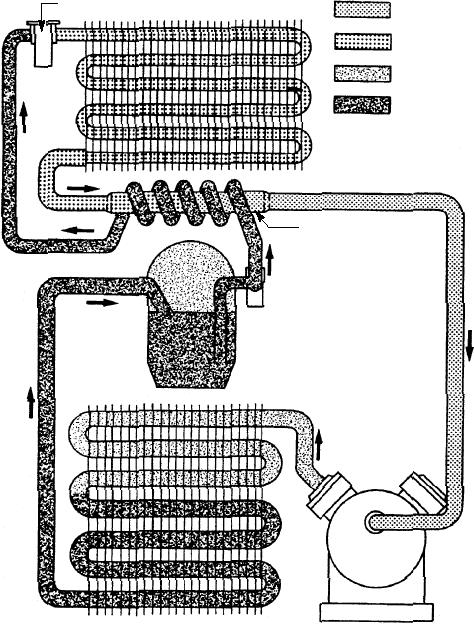
The compressor
system, causing damage to the air-conditioner. Under
no circumstances should you use any of these blend
The condenser
refrigerants to cross match to your R-22, and never mix
R-22 with R-134A. You will only contaminate the
The liquid receiver
system and cause damage to your equipment.
The heat exchanger
PRINCIPLES OF OPERATION
The metering device (expansion valve)
The evaporator
Operation of an air-conditioner is based on the
principle that liquid refrigerant becomes cold as its
The following paragraphs will briefly explain how
pressure is reduced and it is allowed to vaporize. That
these components perform their functions.
cooling effect is then transferred to air spaces that
require cooling for the operation of electronic
Refrigeration Cycle
equipment and the comfort of personnel.
In explaining the refrigeration cycle, we must
Components
consider three aspects of the refrigerant at each stage of
the process: whether the refrigerant is vapor (gas) or
In figure 11-1, you see six major components of an
liquid, the degree of pressure it is under, and its relative
air-conditioning system. These components are:
temperature.
EXPANSION
LOW-PRESSURE VAPOR
VALVE
(SUPERHEATED)
LOW- PRESSURE LIQUID
HIGH-PRESSURE VAPOR
(SUPERHEATED)
HIGH-PRESSURE LIQUID
HEAT
EXCHANGER
LIQUID
RECEIVER
ASf11001
Figure 11-1.--Fundamental refrigeration cycle.
11-7

